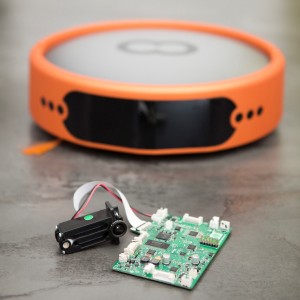Actualizado el 16/04/2024
Robots with autonomous navigation capabilitiesEscrito por Michael Schahpar el 18/04/2017 a las 18:22:423702
(President, robart GmbH)  Consumer Robotics is gaining attention and the resulting service products are finding every day acceptance by consumers in leaps and bounds globally. In fact, research company Tractica predicts that almost 100 million consumer robots will be sold in the next five years.
Robot vacuum cleaners; Home-security robots; Robots running errands; Robots for rehabilitation; Robot assistants for the disabled and elderly; Healthcare robots; Entertainer robots; Pet robots; Robot sports assistants; Robotic vehicles; Educational robots… the possibilities are endless.
As prices come down and new performance thresholds are crossed, the integration of Artificial Intelligence components into robotic products holds the potential to phenomenally transform the consumer robotics sector in terms of both manufacturing capability and personal relevance.
To date, the majority of robots available to consumers are only really able to help with basic, repeatable tasks… and that’s why many consumers are already embracing them in their homes; for the convenience of automating simple, daily tasks. To move beyond early adoption, and to extend the range and purpose of service robots beyond the performance of simple tasks, we require the robot to possess the capability of autonomous navigation and an ‘Artificial Brain’ which can learn, act upon what it has learned, and communicate with its owner.
Autonomous navigation capabilities are based on the robots’ continuous recognition and interpretation of its surroundings, assessment of any problems that are detected and active communication; all forms of Artificial Intelligence which the user rightly expects with a view to making a service robot even more useful to people in all walks of life with a range of requirements.
By developing more intelligent and efficient ways that robots can understand and respond to their environment, the goal is to facilitate robotic adoption across verticals beyond the category of being an “emerging technology.” We believe that in the not too distant future robotic functionality, as being developed by leading companies in the industry, such as robart, will move beyond autonomous navigation and ‘simple’ learning capabilities to include the robot being able to analyze how you use technology in your home in detail, integrate your preferences and start making smart decisions for “itself,” based on that information, without need for further intervention by you.
As technology advances, we will see more day-today integrations and new uses of Artificial Intelligence in our daily lives and stronger consumer adoption of all things robotic. In my opinion, we are still in the early stages of Artificial Intelligence/robotics and people will be amazed with the concepts that are currently being developed.
Michael Schahpar President, robart GmbH Headquartered in Linz, Austria, Robart GmbH is a global leader in the Robotics and IoT industries, developing the next generation of consumer Robotics systems. Founded in 2009, robart’s Robotic “brain” provides Robotic Artificial Intelligence solutions for top international brands, which has numerous applications from floor cleaning, to home security, to “fetch and carry,” to elderly care. With 33 patents filed, pending, and/or granted, robart provides a complete Robotic solution for manufacturers who want the most innovative and technologically advanced Artificial Intelligence solutions for their products.
|